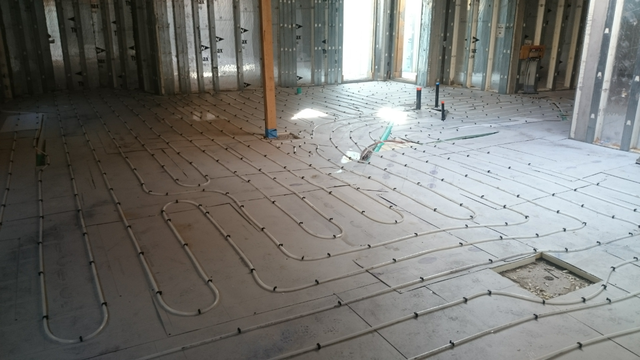


Little to no maintenance : Finally, many people love radiant floor heating because the systems are essentially-maintenance free.Radiant floor heating doesn’t result in dusty rooms, making it especially suited to basements. No disruptive blowing : Convective heaters, though excellent at heat transfer, cause a lot of disruption in the air, leaving indoor air filled with dust and allergens.More importantly, though, very little heat is lost in underfloor heating. For one, radiant heating is traditionally very energy-efficient. Energy-efficient: Radiant floor heating is also a lot more energy-efficient than other forms of space heating.You’re guaranteed greater value from your investment over the life of the heating system. Very cost-effective : In general, radiant floor heating is much more cost-effective than other forms of space heating.There’s also no risk of burns or hot-to-touch surfaces. Extremely safe : Since the wires and tubes are buried under the floor, you won’t need to worry about someone tripping and creating a risk of either fire or personal injury.With the right temperature setting, it isn’t easy to detect that there’s heating going on. The wires and tubes are all buried under the floor.

Discreet : Radiant floor heaters are, without doubt, the most unnoticeable form of heating.Radiant floor heating systems are considered one of the best space heating solutions for the following reasons Pros and Cons of Radiant Heat Flooring Pros Objects in the room then absorb the heat, and when they get to the 71-72☏ range, they, too, begin to re-radiate the heat. Once the floor gets hot enough (at around 71-72☏), it begins to radiate the excess heat into the room. However, most floors work well with this technology. As we’ll see later, some floors are better suited to radiant heating than others. Indeed, some are laid under the flooring material. Secondly, the heaters are laid on the floor. It’s usually compared to convective heating, where heat is first absorbed by the surrounding air then passed on to items, including you. Radiant heat transfer involves heating objects directly. Radiant floor heating (also popular as radiant underfloor heating) is a form of space heating characterized by two things.įirst, it involves heating through radiant heat transfer. If you’re currently shopping for a heater for your basement, read on to learn how radiant floor heating is the way to go, how the heaters work, the different types of radiant floor heaters, and considerations to help you identify the right baseboard heater for your basement. Radiant floor heaters are also fast heaters with very little maintenance. Indeed, most radiant floor heaters sit under the floor such that guests may not even realize there’s a heater in the room. The heaters are very efficient and don’t take up much space since they are laid on the floor. Radiant floor heaters, in particular, are an excellent choice for less used spaces such as the basement. Otherwise, you risk experiencing cold drafts and heat losses that can compromise your heating efficiency. Basement heating is a must if you’re serious about keeping the rest of the home warm and cozy.


 0 kommentar(er)
0 kommentar(er)
